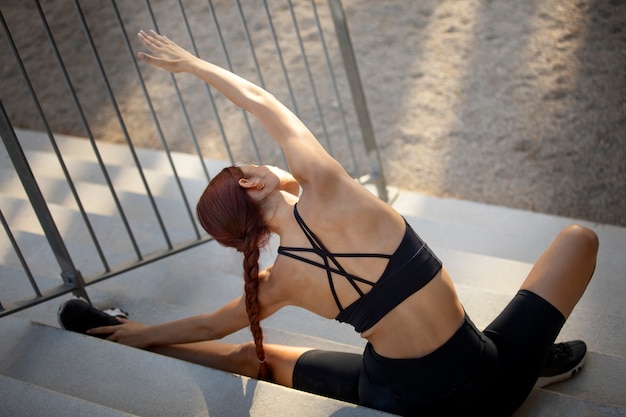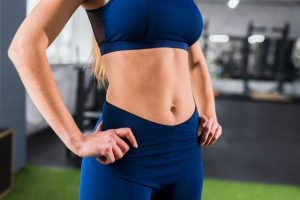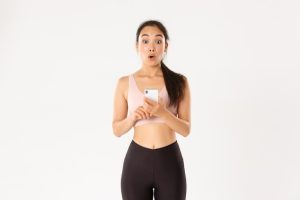
A yoga body isn’t just about being flexible; yoga can also boost memory, heart health, and bone strength, says Anna Magee.
Many of us have embraced yoga, spending around £790 million annually on classes and equipment. While some new forms of yoga seem outlandish—like yoga with dogs or on paddleboards—the true benefits of traditional yoga are increasingly backed by science.
Researchers at UCLA found that a three-month yoga and meditation program was more effective than memory exercises for reducing age-related brain issues. Another study showed it improved sleep in breast cancer survivors.
Lucy Edge, a 53-year-old former advertising executive, turned to yoga when she struggled with depression. Instead of taking the prescribed antidepressants, she traveled to India to learn yoga. Although she didn’t achieve a “yoga goddess” body, she returned feeling happier and more content. She has since written books on yoga and created a section on her website called Yoga Meds, which compiles clinical trials showing yoga’s benefits for various conditions like arthritis and insomnia.
So, how can yoga improve your health, and how can you start?
If crossword puzzles and Sudoku are your go-to memory exercises, it might be time to add a warrior pose to your routine. A UCLA study compared 12 weeks of memory exercises and yoga and meditation on adults over 55. The group that practiced yoga and meditation showed better spatial and visual memory, reduced depression and anxiety, and increased stress resilience.
It doesn’t take hours of headstands to benefit from yoga. In the study, participants did one hour of Kundalini yoga a week, which includes breathing techniques, meditation, and some mantra chanting. They also did 20 minutes of Kirtan Kriya, a type of meditation involving chanting and hand movements.
We’re often told to walk or jog for heart health, but yoga can also be beneficial. A 2014 review in the European Journal of Preventative Cardiology found that yoga can lower heart disease risk as much as conventional exercises like brisk walking. Yoga helps reduce stress, a major factor in heart disease, by lowering stress hormones that increase blood pressure and heart rate.
Dr. Mike Knapton from the British Heart Foundation notes that yoga can help with anxiety, stress, and depression, all common in those with heart conditions. Yoga has also been shown to improve blood pressure, cholesterol, and weight.
For beginners, Charlotte Watts recommends a series of gentle yoga poses to reduce stress. Another option is Restorative yoga, which involves supported postures held for extended periods to give the nervous system a break.
Yoga is also great for back pain relief. Sarah Shone, a physiotherapist and yoga teacher, developed classes for back pain that were later incorporated into a healthcare program. An impressive 87% of participants reported reduced pain. NICE guidelines recommend yoga for lower back pain, and Shone aims to train more physiotherapists to use yoga in their practice.
Additionally, yoga can prevent incontinence by strengthening pelvic floor muscles and increasing bone density. Shone advises beginners to inform their teachers about any health issues and to start with gentler yoga styles like Hatha or Iyengar. If you have a specific condition, consult your doctor about subsidized yoga classes.
When choosing a yoga mat, consider where it will be used and its thickness for joint protection. Taller individuals might prefer a longer mat to avoid feeling restricted. A thicker mat can help those with knee or wrist pain.
For a dependable and eco-friendly option, Valka Yoga’s Elephant Cork Yoga mat, priced at £69.95, is recommended. Made from organic cork and natural rubber, it is durable, renewable, and recyclable. Valka Yoga also plants a tree for each order. The mat’s 3mm thickness provides comfort for your joints, and its cork material becomes grippier with sweat, making it ideal for hot yoga.
For added support, the matching Valka yoga block, priced at £19.95, is useful. It helps with difficult poses, providing extra length and better grip compared to foam blocks.
Whether you’re flexible or not, yoga can help. Here are some classes to try:
– Yin or Restorative yoga, usually done with support and candlelight.
– Vinyasa Flow, an energetic class linking postures to breath.
– Iyengar yoga, focusing on alignment and the use of props.
– Anusara yoga, combining alignment with flowing movements to upbeat music.
– Yoga Therapy, for those with specific medical conditions.
Lucy Edge’s latest book, Down Dog Billionaire, is available on Amazon.




